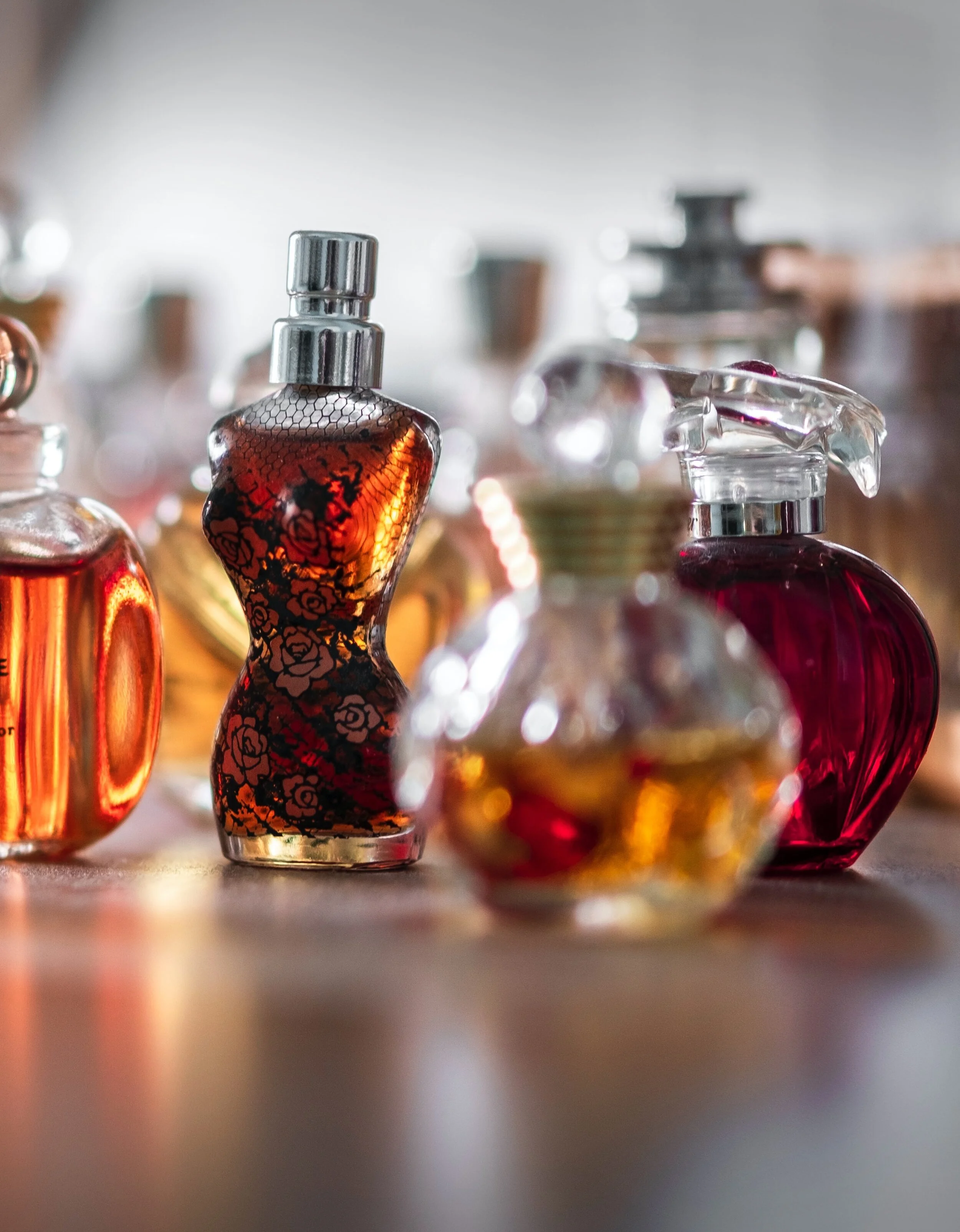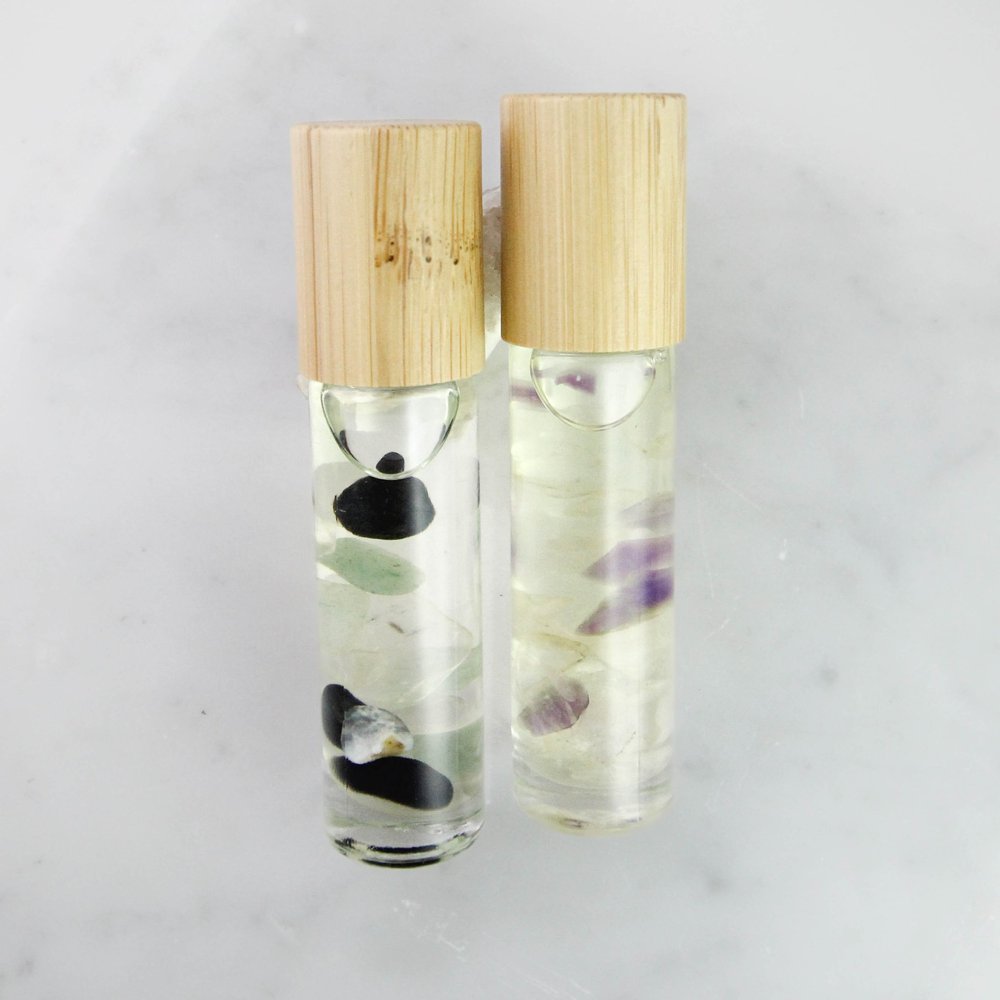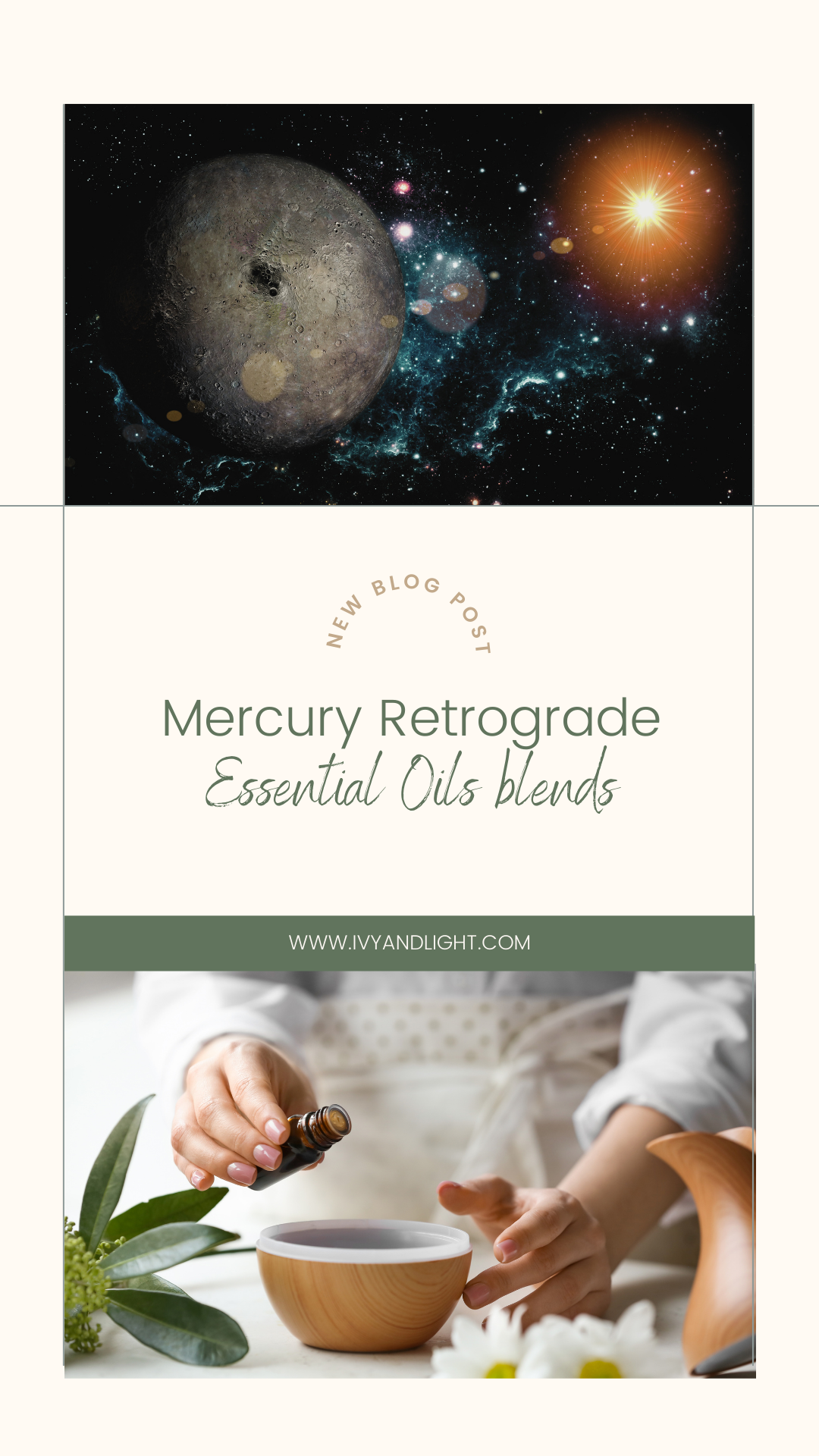A Synergetic Chord: Creating the Perfect Perfume
Deep inhale. . . mmm, do you smell that heady aroma? Be it rich and exotic or crisp and energetic, there is something so powerfully equilibrating about the perfect perfume. It’s one thing to pick up a fragrance that momentarily tickles your fancy and quite another to own one that embodies your essence, matches your mood, and anchors your aura.
You want a perfume that is tailored to you and stands the test of time, and now you can make it yourself.
It’s important to create a scent you love from the initial application to its final traces, and you’ll do exactly this with a chord of top, middle, and base notes.
TOP NOTES
Top notes, such as citrus oils, have the lightest molecules, making them evaporate within fifteen minutes, leaving only fond memories. This is typically the first scent that registers when you catch a whiff of any perfume. . . faint melodic lovely preludes. As these early notes wane, the middle notes awaken.
MIDDLE NOTES
Often floral scents, middle notes last up to an hour before they fade. They are the heart and soul of your harmony, the familiar nuances that bridge the lighter romantic arias with the heavier tones to come.
BASE NOTES
Similarly to the previous layer, the base notes begin emerging right before the midnotes dissipate. While the base notes – usually woodsy oils – commonly last about six hours, they’ve been known to linger for as long as twenty-four, so you want the base notes to be something you truly appreciate. When you add all three types of oils to your perfume, you will enjoy its layered delights for hours on end.
PULLING IN THE NOTES
There’s a beautiful range of options when it comes to selecting the essential oils to create your specialty perfume, so have fun experimenting with a variety of top, middle, and base note oils to see which combinations resonate best with you. As a rule of thumb, begin with at least one of each, but you can add a couple of others for a total of five or seven.
If you want to warm up with some inspiration,
try this Citrus Blossom perfume that features
Grapefruit, Peppermint, Lemongrass, Geranium, and Frankincense.
Don’t stop there, though!
There’s a whole world of other oils to explore.
THE SLOW DANCE
Beyond their lovely fragrances and aromatherapeutic properties, some of these oils lend other superpowers to the composition with the added benefit of being natural fixatives. If you’ve ever wished to slow the hand of time and live a bit longer in the moment before it becomes a memory, you will absolutely love this! Even the slightest scents last somewhat longer with fixatives. Although the top notes tend to quickly disappear, when paired with base notes such as Patchouli, Sandalwood, or Frankincense, that evaporation process deliberately slows.
Why Do Fixatives Work?
Fixatives blend with the key fragrance to create a perception of strengthened scent. Very high in scent molecule count, they often have no distinct odors of their own. Musk, for example, is a traditional fixative used to enhance perfume scents (though synthetic since the 1970s for wildlife conservation). The amount of musk required for effective use is so small that you don’t smell it, yet the entire perfume lasts longer and smells stronger. Natural fixatives are typically plant derived and include many resinous, sticky oils and absolutes like Benzoin, Frankincense, Vetiver, and Orris. These often have an earthy scent that “deepens” a blend.
With a little experience, you’ll have a good idea of what fixatives can enhance and give subtle character while they simultaneously increase the longevity of your perfumes.
A HARMONIC BLEND
Once you’ve chosen your note oils and determined a fixative, start combining them one drop at a time, beginning with the strongest fragrance. A 1:1:1 ratio is perfect for starters, but you’ll want to add more of the various oils until you’re satisfied with the scent. After you achieve the desired results, let the blend rest for at least twenty-four hours to “lock in” the percentages and create a synergy to maintain that perfect chord for each use. Meanwhile, you can prepare Jojoba, Grapeseed, Pomegranate Seed, or Fractionated Coconut Oil to use as your carrier. Most of these carrier oils are smooth moisturizers with inherent benefits of their own, so use whichever you have on hand or try to compliment the overall ambiance of your perfume.
BODY SPRAY OPTIONS
If you prefer a body spray type of perfume instead of a roll-on, you’ll need a few other elements to combine with your oils. Whether you use filtered, boiled, or distilled water, you’ll want at least six ounces per 28-35 drops of essential oils, but don’t add it yet. Yes, you read that right. True, oil and water have a strange relationship, but once you bring in a couple of binders (vegetable glycerin as an emulsifier along with either witch hazel or alcohol as a preservative), they’ll be all right.
So which binder will it be?
On one hand, there is Perfumer’s Alcohol that provides a greater bind and quicker evaporation but also contains toxic chemical compounds. On the other hand, there is witch hazel, a plant-based astringent with naturally occurring skin healing properties and low alcohol percentages. Although a 200 Proof alcohol is ideal for spray perfumes, Perfumer’s Alcohol nullifies the advantages of an essential oil perfume. Vodka makes a good compromise.
Choose the highest proof you can, and you will still end with a lovely product. That being said, some find higher alcohol levels drying while others have sensitivities to witch hazel, so consider what you really want permeating your skin and do what works best for you.
THE GRAND FINALE
By now your note oils’ molecules should have sufficiently connected and absorbed with each other into a beautifully balanced synergy, so you can add your carrier oil to your glass roller bottle. For the spray perfume, skip the carrier oil and pour the oils into a glass spray bottle with a tablespoon each of the emulsifier and binder you’re using. Shake briskly before adding the water and afterwards gently before each use. Dab a bit on your pulse points and bask in the redolence of your new signature scent.
If you’d like to get a whole collection of essential oil perfume recipes and learn more about their healing benefits too, check out the Crystal + Oil Synergies Recipe Book.
POSTSCRIPT
As always, user health and safety are paramount, so please read the labels before applying any new-to-you oils to your skin in general and specifically near your eyes. To avoid discomfort, be sure to dilute your blends and synergies as recommended, especially when incorporating spicy “hot” oils such as Cinnamon, Clove, and Ginger or fast-cooling minty oils. Caution should also be taken when using citrus oils like Grapefruit and Lemon, as well as Bergamot, Angelica, and Dill. These oils are photosensitive and should not be exposed to direct sunlight or UV rays while on your skin. If you favor these scents, apply to areas that will not be exposed (unless its twelve hours ahead of time), or reserve them for an evening out on the town.
































